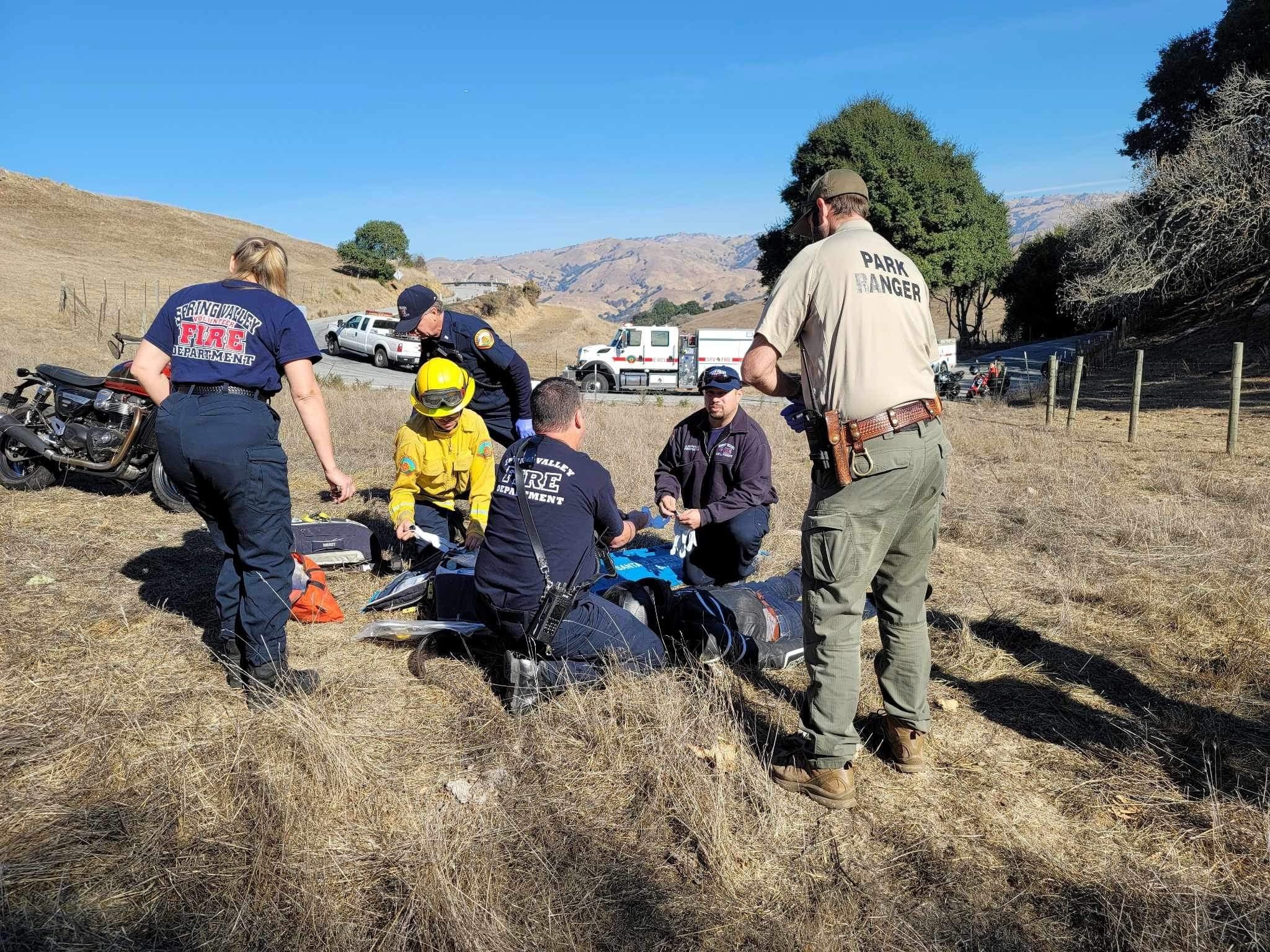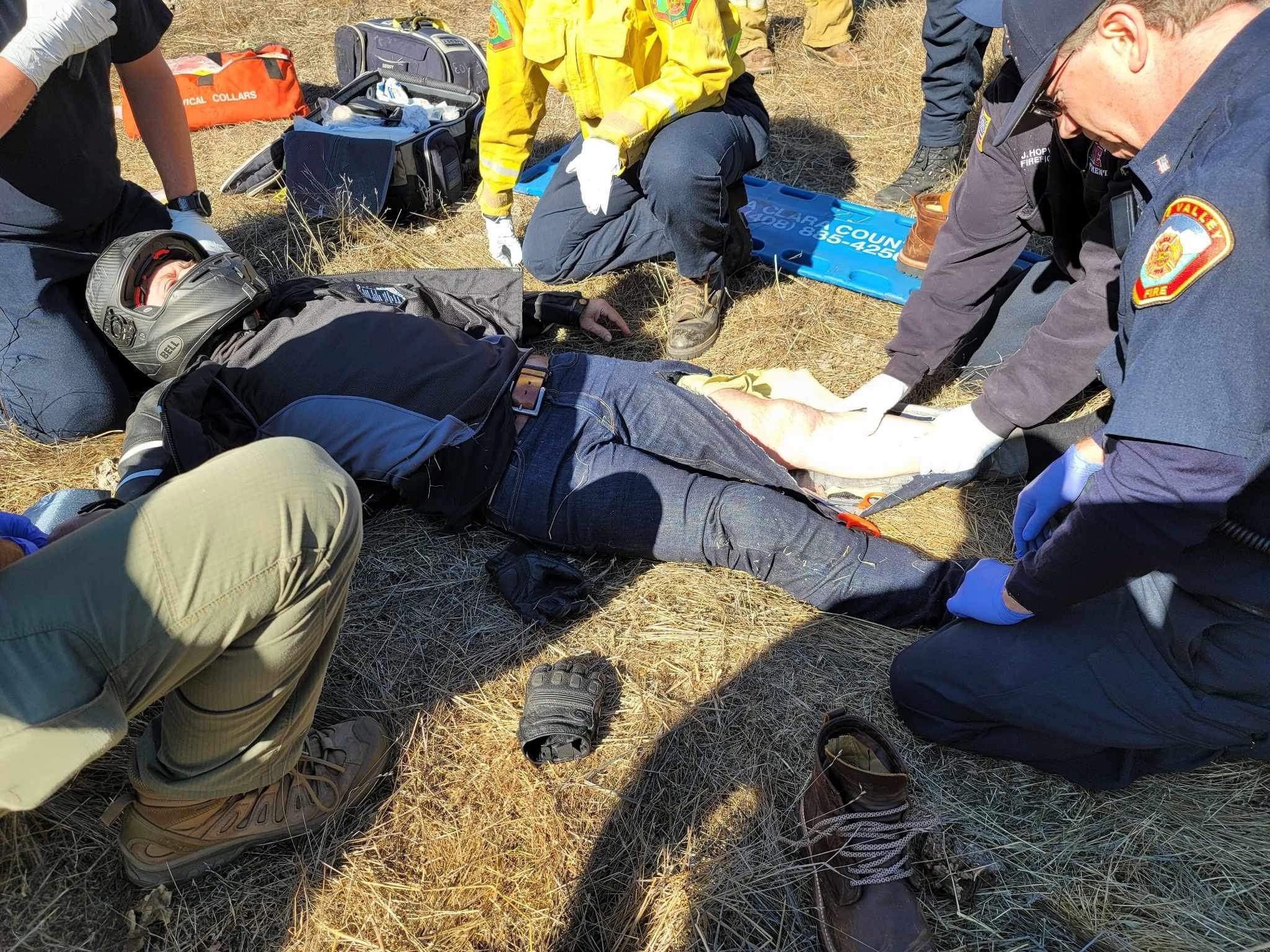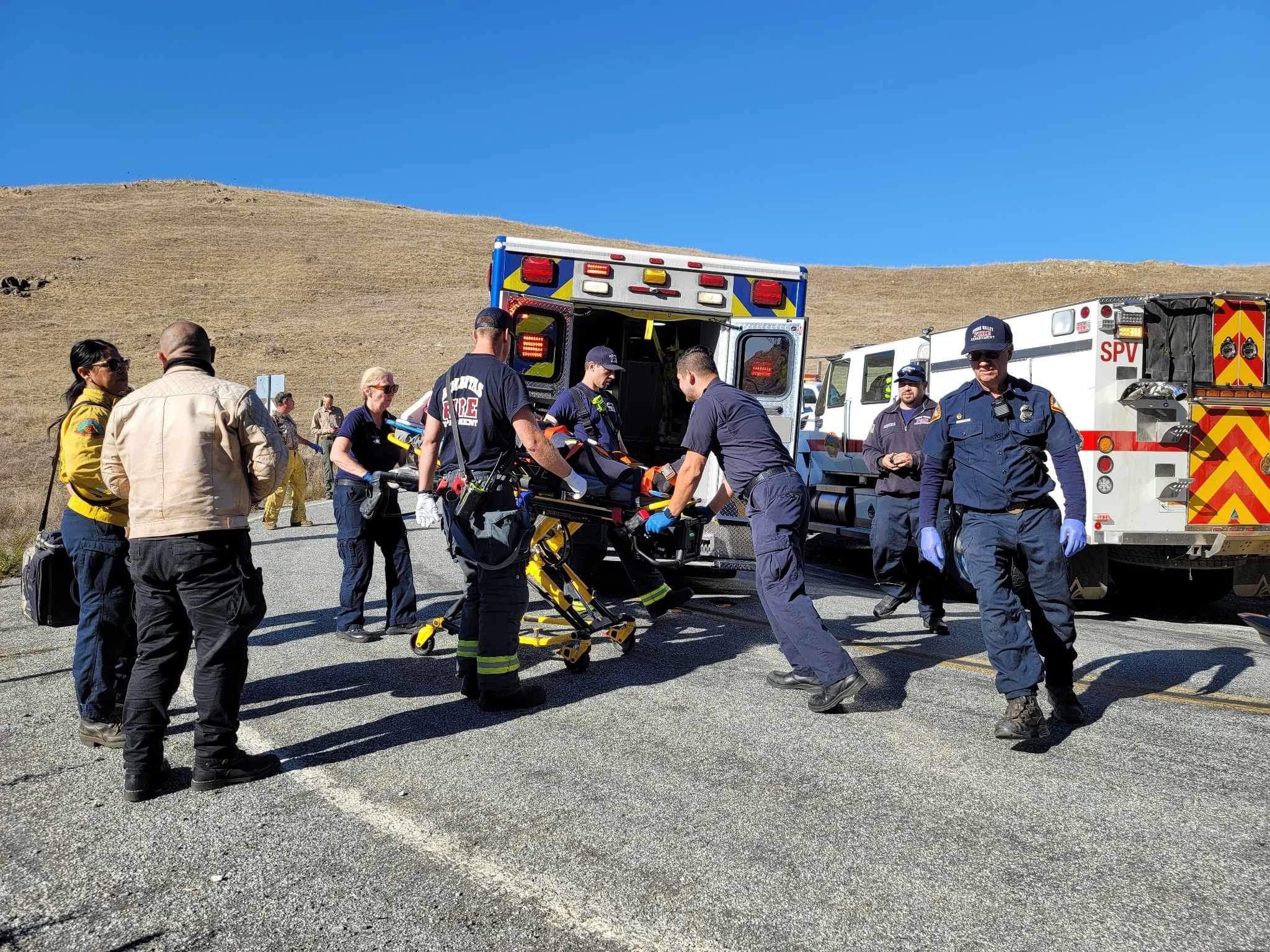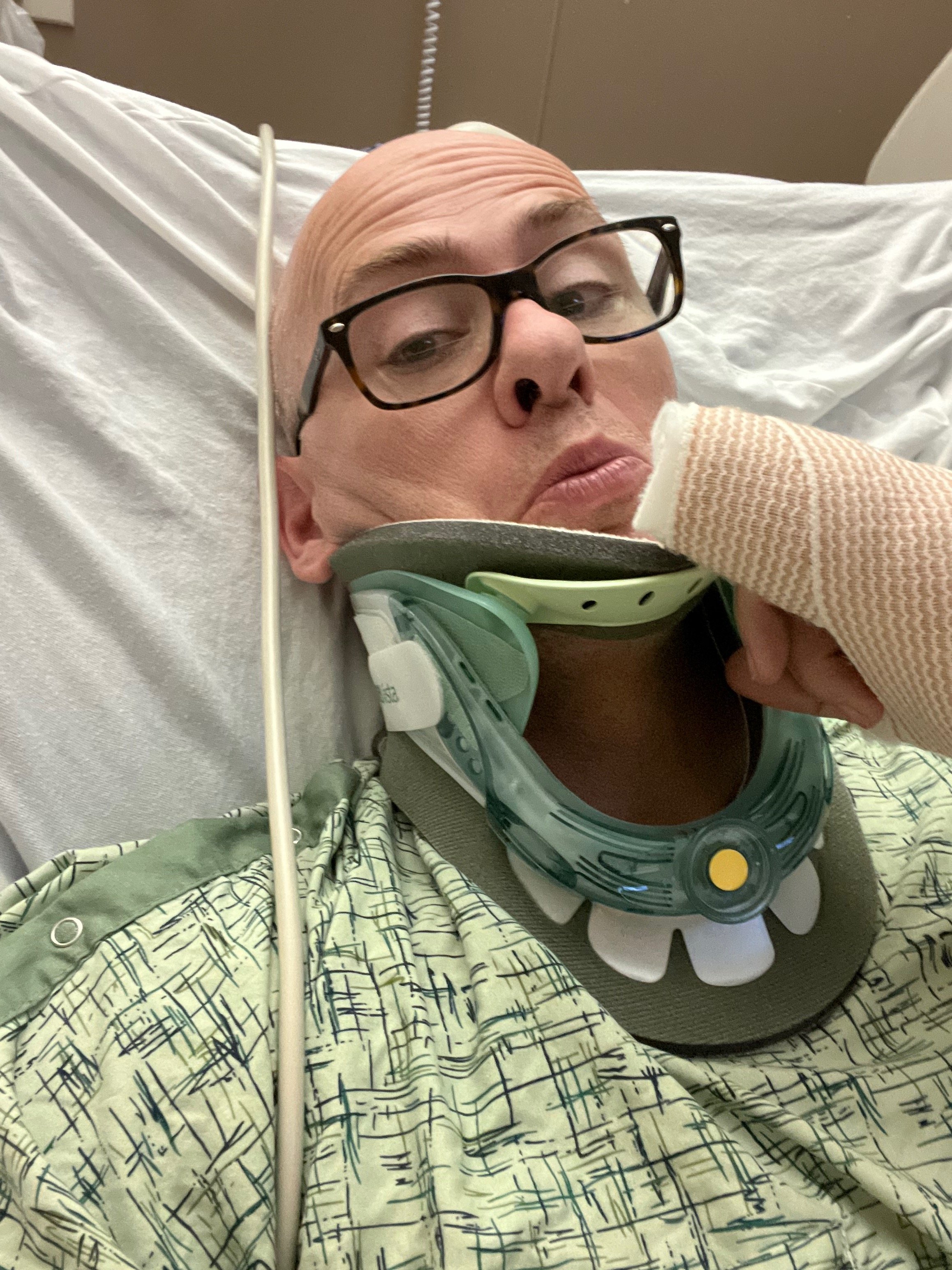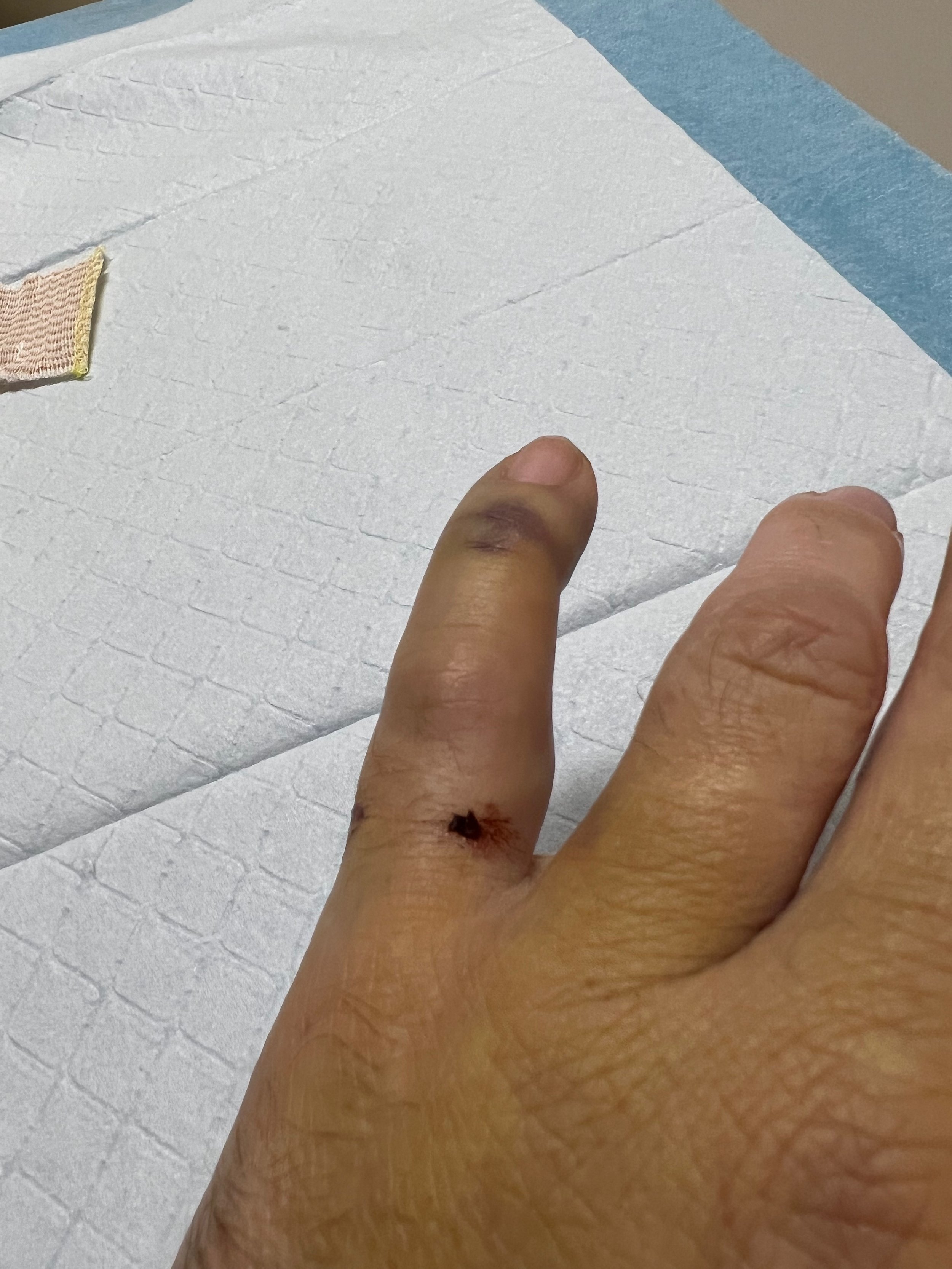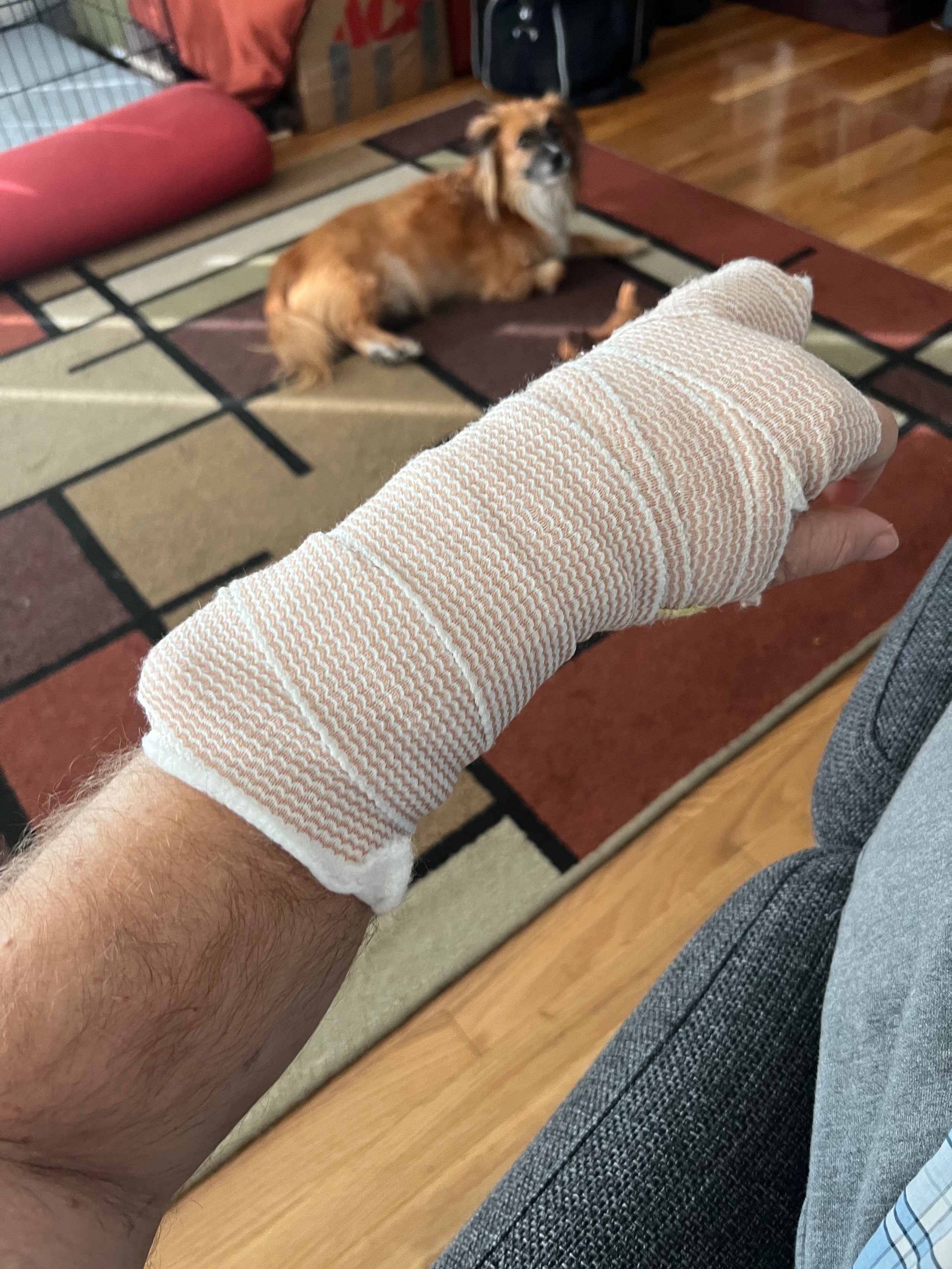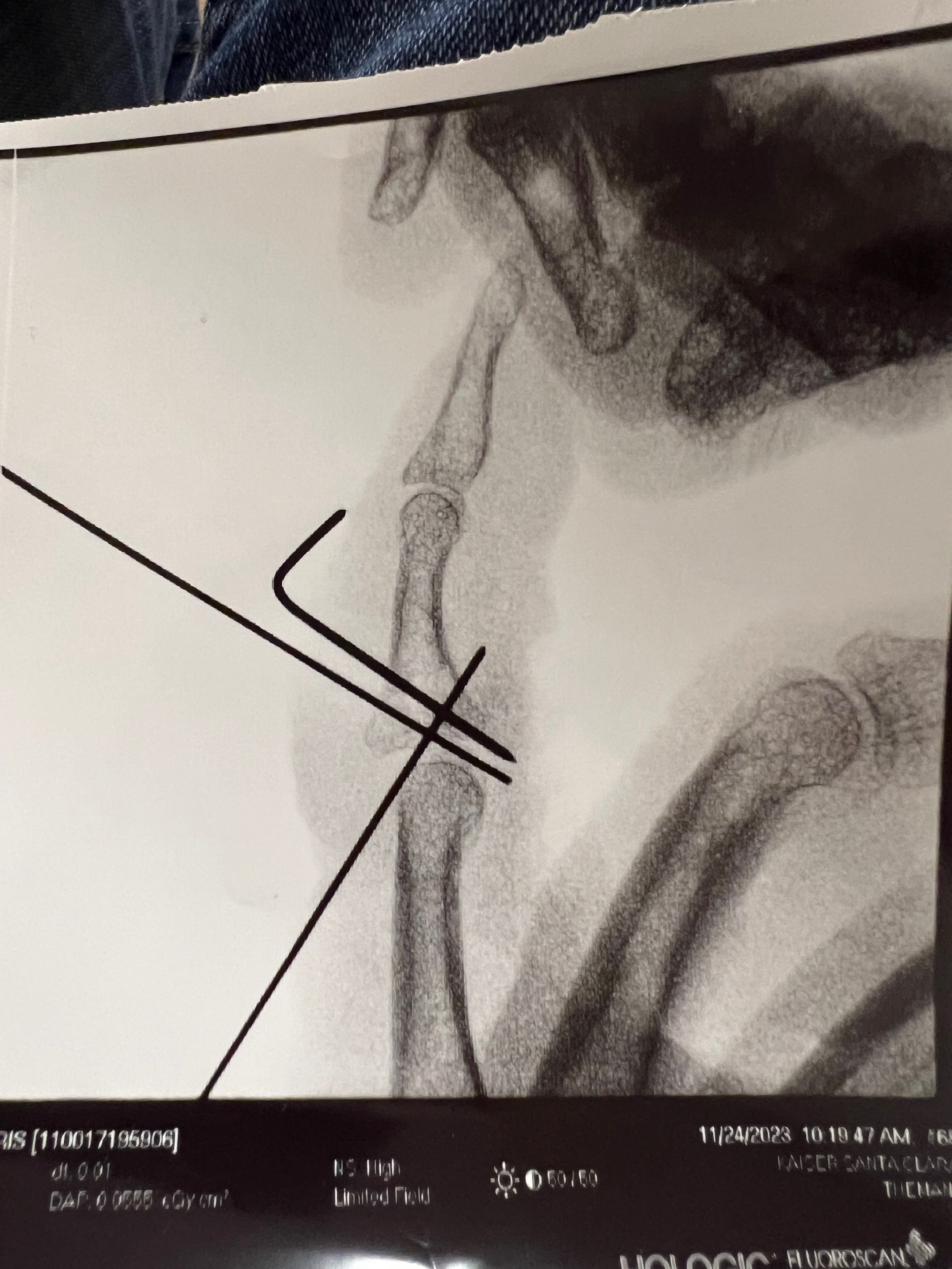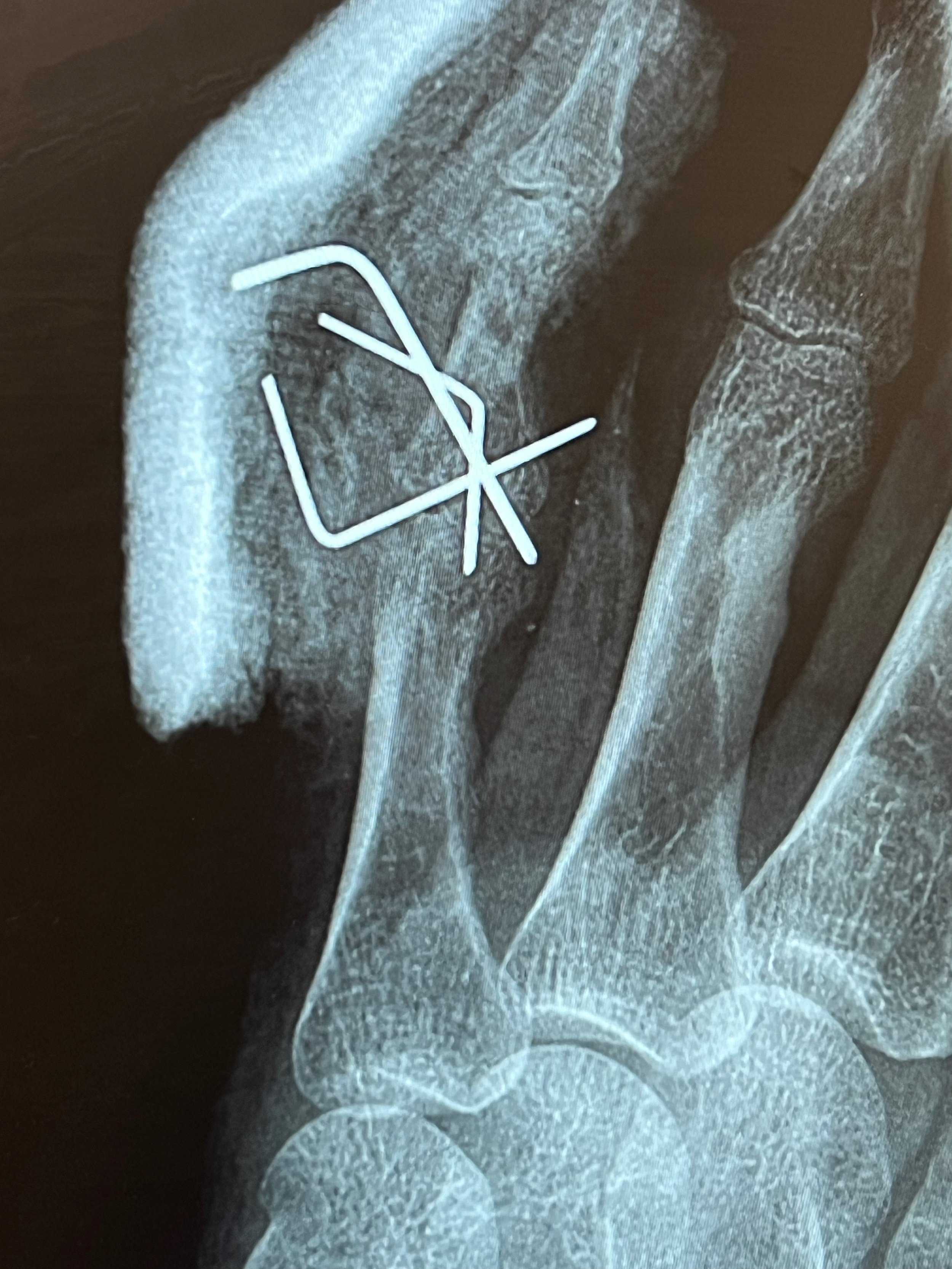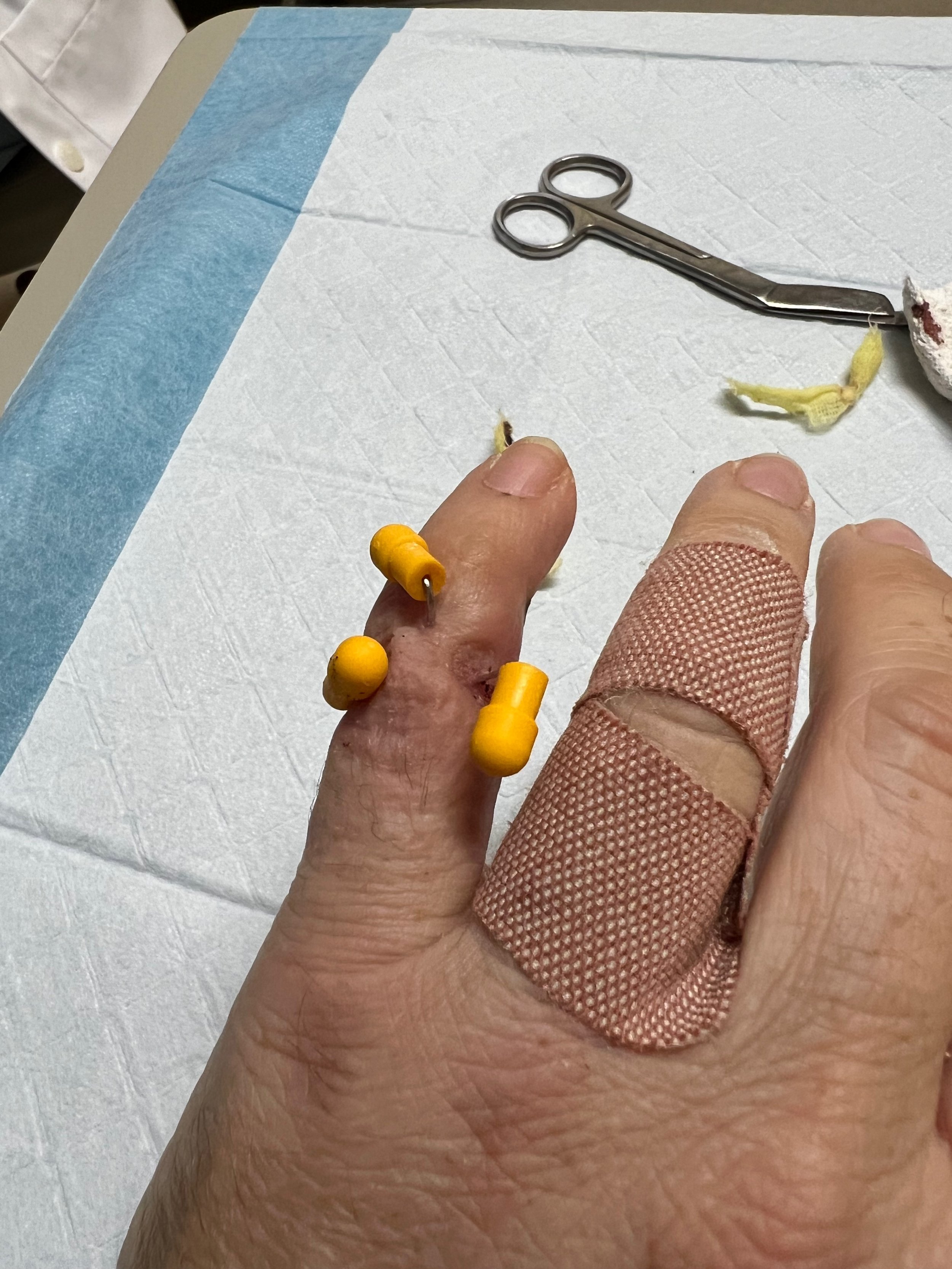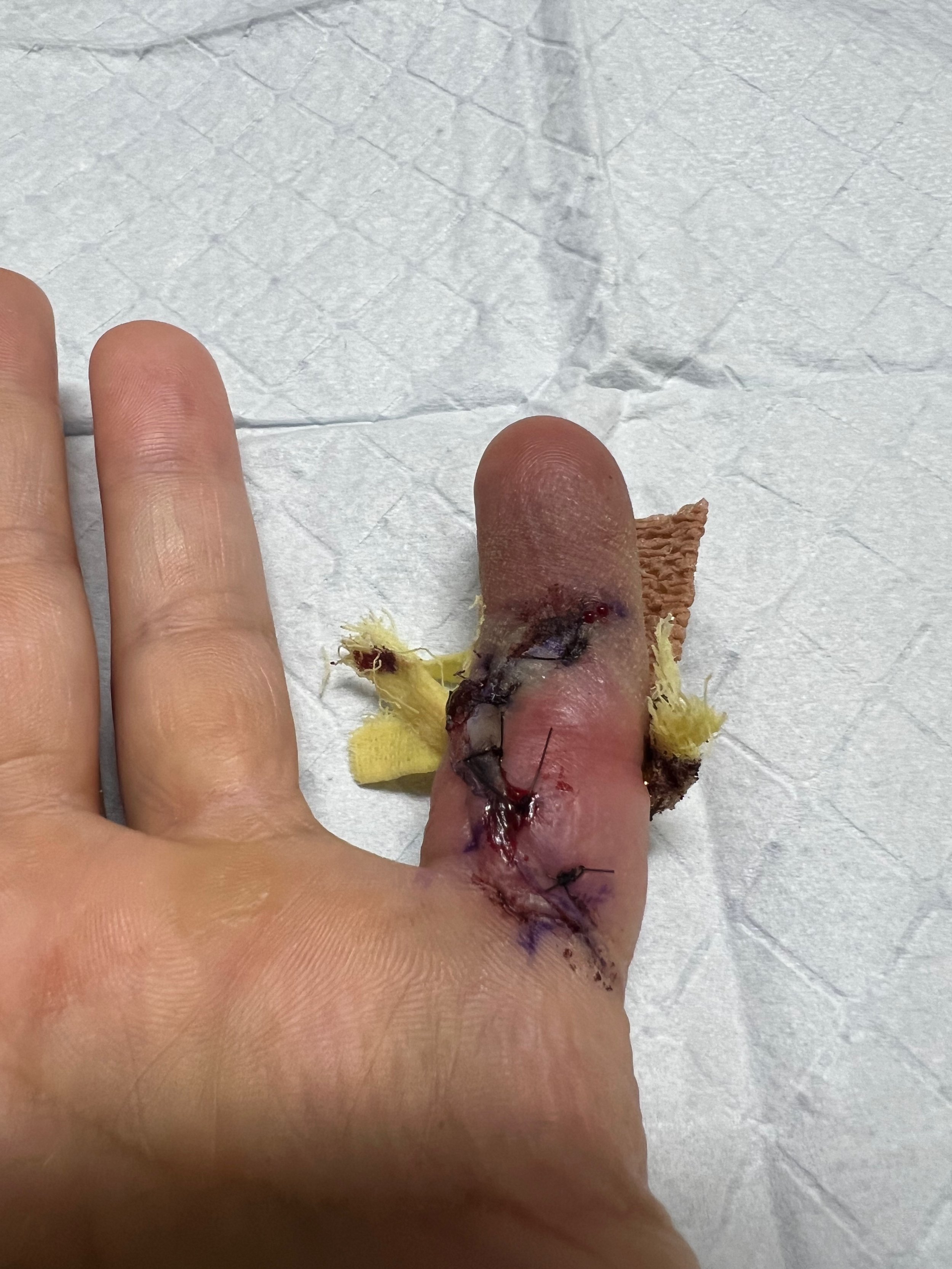Crashing Sucks Part 1: The Wreck and Early Recovery
It just sucks. You never want it to happen, bug as a motorcyclist you know it’s just a matter of when. The first memory I have afterwards was lying in a hospital with my wife and daughter beside me. Read on as I take you through my unfortunate tumble; a tale of barbed wire, investigation, and recovery, with a specific focus on the gear that helped me get through it.
Reconstructing the Accident
The weather was good on November 11th, even by Northern California standards and I was looking forward to the last group ride of the year. I geared up as I usually do for a street ride—more than most, less than a few. Wearing my Kevlar reinforced pants and motorcycle boots, I made my way to the garage, donned my seldom used wind blocking shirt and over that my fully armored leather jacket. Started up the bike, pulled on my helmet, my gloves, and I ventured out to the meetup spot. My last visual memory was checking my map and realizing I would be 10 minutes early. Beyond that, I have no memory of the events that transpired the remainder of the day. Everything beyond that is evidence and conjecture from what I have collected since, by collecting feedback from other riders, photos, medical reports, and analyzing the gear I was wearing, or what was left of it.
We journeyed south from Castro Valley, CA and through the hills of the East Bay along winding Calaveras Road. The curves grew tighter as we neared the reservoir. We weren’t far from the more relaxed Felter Road when it all went wrong. Photos and witnesses confirm I was approaching a left turn and completely failed to negotiate it. Completely. They saw no brake lights, no turn in. I went straight off the road and through a ditch and a barbed wire fence, off into a field where I eventually came to rest, face down. The group stopped and rolled me over to check on me and summoned EMS. I knew enough that my injuries were largely to the left side of my body. At this point I began my cycle of asking the same questions over and over and over again. What happened? Why did I crash? Lowside left or high side right? Did my ambition exceed my talent? The answer to each question was presumably the same. “We don’t know.” Several vehicles made their way to the site bringing the good folks of Spring Valley Fire Department, a park ranger, and county paramedics.
They began to assess my condition and with my permission they began to cut open my riding jeans and jacket looking for wounds and broken bones. They removed my boots, then properly removed my helmet. Thankfully advances in helmet design made this last bit safer and easier. Well designed modern helmets now have cheek pads that can be pulled down and out of the helmet. This reduces the pulling force (traction) that is otherwise required to remove a helmet. If there is a neck injury that force can lead to severe complications. Fortunately there were no such issues for me personally. Nevertheless I appreciate the feature and will never purchase a helmet without it. From there I was placed on a stretcher and fully immobilized for my transport to the hospital. My wife was called from my phone so she could meet me there. And I remember none of it.
Diagnoses
I was brought into the emergency room where I was attended to by caring nurses and an obviously disapproving doctor. I doubt many of my readers are ER doctors and those who are would know better, but as patients, motorcyclistsI don’t want your pity and we sure as hell don’t need your judgment. He probably gave me a lecture—I wouldn’t remember. He did give me a couple shots to my dislocated left pinky to numb the pain for an hour or so. Naturally, he returned 30 minutes beyond that window to reset it. Without warning or inquiry about my pain levels, he placed my hand on a table sideways and used his full body weight to smash my middle phalanx roughly into position. Next up was a full body CT scan to look for any other irregularities. Still, these are not yet my memories, but what has been recounted to me by my wife.
Where the memories do start to return is later that night from my hospital room. I can recall the voices of my wife and daughter at my bedside. I do not recall the conversations, but they do: the same cycle of questions I had been asking all along. Over and over and over. Same answer. Over and over. After a couple more hours of this I could take stock of my injuries and actually recall them. From the top down, a concussion, possible basal skull fracture, broken left pinky, several punctures to my left leg, and bruises to my left knee and right ankle. And a little surprise, something doesn’t look right about one of my kidneys. It has nothing to do with the crash, but it was found in the initial scan.
Early Stages of Recovery
The concussion was the first one I have ever had, at least of any significance. I gained new respect for their affects on the brain. I was constantly tired. I had difficulty maintaining balance. Bright lights hurt my eyes. My short term memory was horrible. Thanks in part to occupational therapy and neurological physical therapy, as time passed, the effects subsided, but it would be a full month before I could return to the computer and do any work. Another two weeks until I could work a full day.
Just under two weeks from the wreck I had surgery to repair the damaged pinky. For bones this small, you don’t go to Orthopedics, you go to Plastics. Fortunately I was assigned to one of their top surgeons who soon after went on to lead the department shortly theafter. The technique the surgeon planned to use was called an external fixation or ex fix for short. This uses a “K wire” that goes through each phalanx and protrudes laterally out of each side of the finger. A “U” shaped wire is then attached to the ends of those three with rubber bands used to keep a bit of traction on the bones.Unfortunately this technique could not be used. The middle phalanx had fractured into four pieces, mainly where it joins the knuckle below it. I have a hypothesis the setting of the bone contributed to the fractures, but I have no way of knowing and it doesn’t really matter at this point. A backup technique was employed. The surgeon made an incision nearly the length of the finger on the palmar side and put three K wires through the middle phalanx to rejoin most of the bones so that the knuckle could function once healed. The wires protrude through the dorsal side of my finger and are bent at a 90 degree angle and capped with rubber tips. The doctor then wrapped the finger in self-adhesive stretch bandage, then a plaster cast above the pins, and another layer of wrap. I was told to manage pain and swelling with Tylenol and Motrin and sent home.
That didn’t work. Far from it. The pain would come in waves several times a day. We had Norco on hand from earlier and it did nothing to help. I couldn’t imagine a pain any greater than what I was feeling when these waves crashed. Nurses will often ask you for your pain levels on a 10 scale. This was a full 10. At times I asked myself if a finger was really worth it. Until now, I hadn’t cried in pain since I was a child, but it was that bad. It felt like my finger was being ripped open by a dull, hot knife. When I wasn’t in excruciating pain, I was depressed wondering how long I could go on like this and how long it might be before the next wave. Late at night, two days post-op I could not bear it any longer and had my wife drive me to the ER. The doctor there gave me several shots to numb the pain. He felt like he should unwrap the bandages but didn’t want to offend the surgeon by messing something up. He sent me home with oxycodone to manage the pain. Again, it had no effect other than to make me slightly loopy and paranoid of addiction. The cycles of pain and depression followed. Two days of this hell on earth continued until I could get an appointment with Plastics where my bandages were removed. The process itself was not particularly painful in hindsight, but I was incredibly tense going through it. That someone was handling the very digit that inflicted so much trauma on me was difficult to process. My breathing was erratic and I began to sweat. I finally just looked away and waited for it to end. This was the best thing I could have done. The physicians assistant cleaned and inspected the incision and wires and replaced the dressings, this time with less compression. They prescribed another drug, Lyrica and sent me home. The re-wrapping made all the difference. I was able to quickly ween myself off everything but Tylenol and Motrin.
Just as things were picking up on the brain and finger fronts, my knee decided to reassert itself. After just my second vigorous PT walk, my knee swelled up and just walking became painful. More doctors, more x-rays, but still no diagnosis. The next step is an MRI which is expected to reveal a torn miniscus along with the severity of it and a plan for how to address it. As for the kidney, that’s still up in the air as well. A follow up ultrasound inspection confirmed what the initial CT scan had detected. A renal-specific CT scan appointment is on the books.
Support
The healing process wears on me. While I am most likely (hopefully!) past my darkest days, I want nothing more than to put the entire experience behind me. That said, I could not ask for more support than I have gotten from my family and friends. My wife, Dev has been with me and incredibly supportive every step of the way. She took on all of my responsibilities around the house, got my meds for me at all hours, and so importantly to me always supported my journey to getting back on the bike. Brandon who was with me on that ride came to the ER to check on me (so I’m told, I honestly don’t rember) and has offered to test ride the next bike I purchase if I’m unable to do so myself. I could do so much worse than to have a support system that I do and I appreciate every moment of it.


